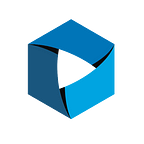TRX: We Found New Instances of Code Copy without Attribution
These Pale in Comparison to the Technical Challenges of the Mainnet Launch
On June 12, we published an in-depth analysis of the TRON network and the TRX digital asset to our client base. TRON is a media focused decentralized applications platform that is in the process of launching its main network. Its founder, Justin Sun, founded the Peiwo App, which is one of the most popular voice streaming apps in China with 10M monthly users. TRX will be integrated with Peiwo and the project has garnered a strong social media following, which is an important ingredient for network and token proliferation. Although these may give some reason to be bullish, we think they are far outweighed by accusations of plagiarism, petty feuds, and technical concerns.
On December 31, 2017, the project was initially accused of violating the GNU Lesser General Public License v3.0 (LGPL) because the project does not mention that its client, Java-Tron, was derived from EthereumJ, which is one of the first Ethereum libraries. Although the project later added the relevant LGPL license language to 14 of the files, we found several instances of code that was copied verbatim or slightly modified from EthereumJ, still without appropriate reference. In early January, Juan Benet, the founder of Protocol Labs, alleged that at least 9 pages of TRON’s white paper were copied from either the Filecoin or IPFS papers, both of which were co-authored by Benet. Although Justin explained this as a mistranslation for the English version, given the amount that was copied, it is unlikely to have been a mere mistranslation.
While copying code without attribution opens the project up to some legal risks, they pale in comparison to the technical risks that the project faces. EthereumJ is known to be unreliable and has issues like memory leakage. Moreover, the Tron Virtual Machine is a direct copy of the Ethereum Virtual Machine, but with changes that may increase the network’s attack surface. By incorporating a Delegated Proof-of-Stake consensus algorithm into its technology stack, the TRON network will likely be exposed to unique technical risks following its mainnet launch because the project is combining technologies originally developed for different system architectures.
Finally, while there is little economic activity for us to measure right now, many important economic choices have been poorly defined or have conflicting or misleading information. Perhaps when the network is more fully utilized, we will have the ability to measure the on-chain economic activity. We do know that the TRX token is one of the most centrally owned large cap ERC20 tokens as denoted by the following chart.
Source: Digital Asset Research, Etherscan.io
If you would figure out how to get access to DAR’s research, please submit a request for information here.
If you would like to sign up for our newsletter, please sign up here.
